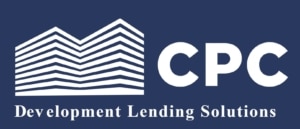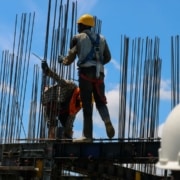Who is responsible for building defects?
Written by David Lovato – CPC Development Lending Solutions
March 2024
Sydney’s Opal Tower might be the most high-profile case of an apartment block with severe structural problems, but it’s far from being the only one.
In fact, a recent NSW Building Commission report found that 53% of apartments registered in the state from 2016 to 2022 have had at least one serious defect.
As a property developer, understanding who bears responsibility for building defects is crucial as it helps you manage risks effectively and ensure the project’s success.
Understanding building defects
Firstly, it’s important to define what constitutes a building defect.
Generally, it’s any aspect of the building that doesn’t perform to the required standards set out in your building contract, the National Construction Code, or relevant Australian Standards.
These can range from minor issues like peeling paint, which are more cosmetic, to significant structural failures that can pose safety risks.
The developer’s role
As a developer, you play a pivotal role in the construction process, overseeing the project from conception to completion.
While you might not be directly involved in the physical construction, you are ultimately responsible for engaging the contractors and professionals who are.
This means that any defects found can indirectly fall on your shoulders. However, the extent of your responsibility can vary based on contracts, warranties, and the specific circumstances of your case.
Builders and contractors
The direct responsibility for correcting defects typically falls to the builders and contractors who carried out the work.
Under Australian law, builders are required to warrant that their work is free from defects for a certain period — usually around 6 to 7 years for structural defects and 2 years for non-structural defects, depending on the state or territory.
It’s important for you as a developer to have clear, comprehensive contracts with your builders and contractors that outline their obligations regarding defect rectification. This not only ensures clarity but also provides a legal framework for resolving disputes should they arise.
Architect and engineers
Architects and engineers play a critical role in the design and specification of the project. So what happens if a defect is the result of poor design rather than the construction itself?
Well, in such cases, the responsibility might lie with the engineering and design professionals, who are expected to provide designs that meet regulatory standards and are fit for purpose.
Material suppliers
The quality of materials used in construction also cannot be overlooked. After all, defective or subpar materials can lead to significant issues down the line, from cosmetic flaws to structural failures.
Suppliers are expected to provide materials that comply with industry standards and specifications. Should a defect arise due to faulty materials, the supplier could be held responsible, again contingent on the terms of their supply agreement.
Dispute resolution
Disagreements over the responsibility for defects can sometimes escalate into disputes. In such cases, mediation and arbitration become important tools for resolution.
There are also statutory bodies, such as the Building Commission NSW and the Victorian Building Authority, which can offer advice and assistance in resolving disputes over building defects.
Engaging with these processes can be a constructive way to resolve problems without resorting to lengthy and costly legal battles.
Managing the process
The best approach to dealing with building defects is to mitigate the risks from the start.
This involves:
- Selecting reputable builders and contractors: Conduct thorough vetting, check references, and review past projects to ensure they meet your standards.
- Implementing strict quality controls: Establish clear quality benchmarks and conduct regular inspections throughout the construction process.
- Maintaining open communication: Foster a culture of transparency and open dialogue with your construction team to quickly address any issues that arise.
- Understanding your legal obligations: Stay informed about your rights and responsibilities under Australian construction law and ensure all contracts are clear and comprehensive.
For property developers, navigating the complexities of building defects is part and parcel of the development process.
While the responsibility for rectifying defects primarily lies with builders and contractors, remember you’re not just a bystander in this process. Your role involves orchestrating the various moving parts and ensuring that the project adheres to all regulatory and quality standards. This includes diligent oversight of the work being carried out by your contractors as well as the materials being used.
Crowd Property Capital is a property development finance specialist. We help property developers overcome their funding challenges by sourcing loans for land, construction and residual stock. Contact us at info@crowdpropertycapital.com.au or fill in this form.













